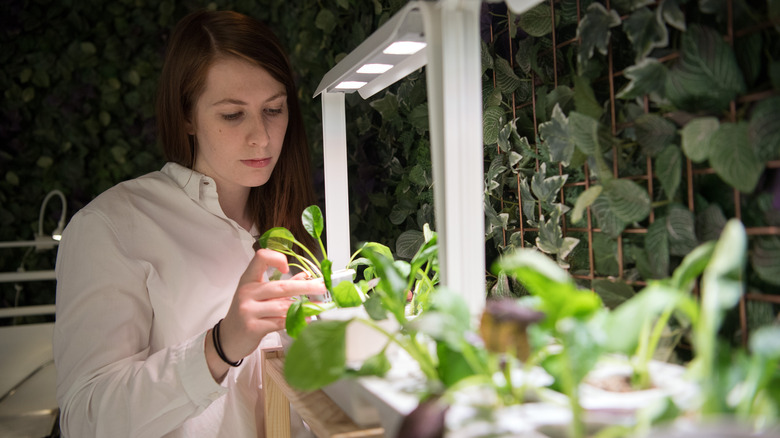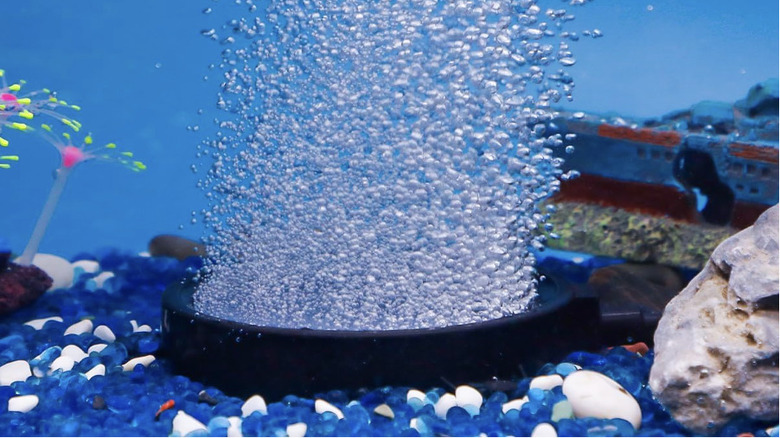An Air Stone May Be Your Answer To Healthy Indoor Plant Growth
We may receive a commission on purchases made from links.
For many plant parents, hydroponic gardening has been the magical answer to no longer dealing with fungus gnats or watering schedules. But, as its name — hydro for water, and ponos for labor — suggests, this alternative is not quite as straightforward as simply putting your plant in water. It requires a little, well, labor. First, what exactly is a hydroponic garden? In the most basic terms, this method involves growing plants in water rather than soil. Although vegetables and herbs are most commonly grown using hydroponics, houseplants also are on this list of 30 plants you can grow in an indoor hydroponic garden. However, for a hydroponic system to be effective, plants need sufficient CO2 — and that's where an air stone comes in.
An air stone is a porous device that sits at the bottom of an aquarium and is attached by a thin tube to an air pump. The pump blows air into the stone, which then produces bubbles. The bubbles, via surface agitation, then provide CO2 to the plant roots submerged in the tank. This is similar to how earthworms tunnel through soil, improving the aeration of roots. Air stones also promote water circulation, which helps to discourage algae buildup in the tank.
How to choose an air stone
Most air stones are made of either silica or aluminum oxide, with silica being the most commonly used and more affordable, yet less durable, of the two options. The stones come in many shapes and sizes to accommodate a variety of tanks. Some stones are squat and cylindrical for smaller spaces, like this popular 1-inch Pawfly Aquarium Air Stone, while the 4-inch Pawfly Aquarium Air Stone Bar Bubbler may be a better option for a wide tank. An air stone disc with multiple diameters, like the Pawfly Aquarium Airstone Bubble Diffuser, is a subtle option that can be suctioned to the bottom of the tank. When installing the air stone, make sure it sits as low as possible in the tank to give bubbles the optimal opportunity to rise throughout the water.
You will also need an air pump for your stone. Do some research to determine which pump is best for the size of your tank. You want to make sure that your air pump is strong enough to generate enough circulation throughout your entire tank. Not only does this help with generating CO2, but it also aids in nutrient distribution. If the pump isn't strong enough, your air stone is not serving its purpose. At the same time, too much movement in the water could damage the plants' roots. For some extra plant TLC, you can incorporate diluted hydrogen peroxide, which plays an essential role in hydroponic gardening by providing plants with more CO2 and reducing mold buildup.

